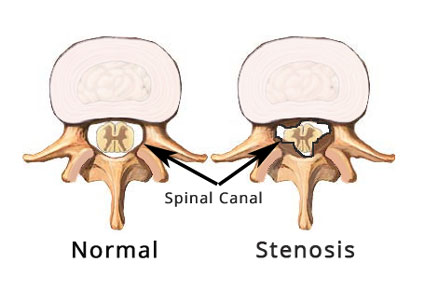What is Lumbar Stenosis and How is it Treated?
Lumbar stenosis is a condition often treated at Saratoga Spine. Let’s take a closer look at what lumbar stenosis is and how it’s treated.

What is Lumbar Stenosis?
Stenosis refers to narrowing of the spinal canal. The term lumbar stenosis is used when the narrowing of the spinal canal occurs in the lumbar region of the spine (ie: lower back).
What is the Spinal Canal?
One of the primary functions of the spine is to protect the precious spinal cord which carries messages back and forth between the body and the brain. The messages that travel through the spinal cord allow us to feel and move our body.
The bones in our body are shaped such that they create a protective cavity around the spinal cord. This cavity is called the spinal canal.
How Does the Spinal Canal Become Narrow?
There are several conditions that can cause a narrowing of this canal. Someone suffering from stenosis can have one or a combination of these conditions.
- Bulging or Herniated Disc – A condition in which the cushion-like material in between each vertebrae (the bones in the spine) loses its shape. The disc material can then protrude out into the spinal canal, narrowing the cavity.
- Bone Spurs – Bone spurs are irregular growths on the bone that can occur over time. If bone spurs on the vertebrae of the spine grow in toward the spinal canal they can cause a narrowing of the canal.
- Thickened Ligaments – There is a ligament that runs along the back of the spinal canal. This ligament can become thickened with age and push into the spinal canal, causing stenosis.
Tumors and congenital conditions can also cause stenosis but are less common.
How is Lumbar Stenosis Treated?
Many people may have lumbar stenosis and not even realize it. For those that do experience symptoms, there are a range of treatment options.
Initial treatment options can include the use of anti-inflammatory medication, physical therapy, or chiropractic care. If initial treatment options are ineffective, or the pain continues for a long time, your doctor may recommend steroid injections. Finally, if none of these treatment options are effective and your pain continues, your doctor may recommend surgical treatment.
The majority of our patients at Saratoga Spine do not require surgery. To recommend surgery, our doctors believe the benefits must greatly outweigh the risks associated with it.
